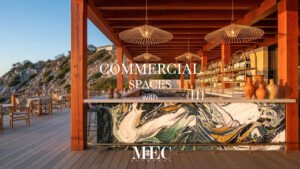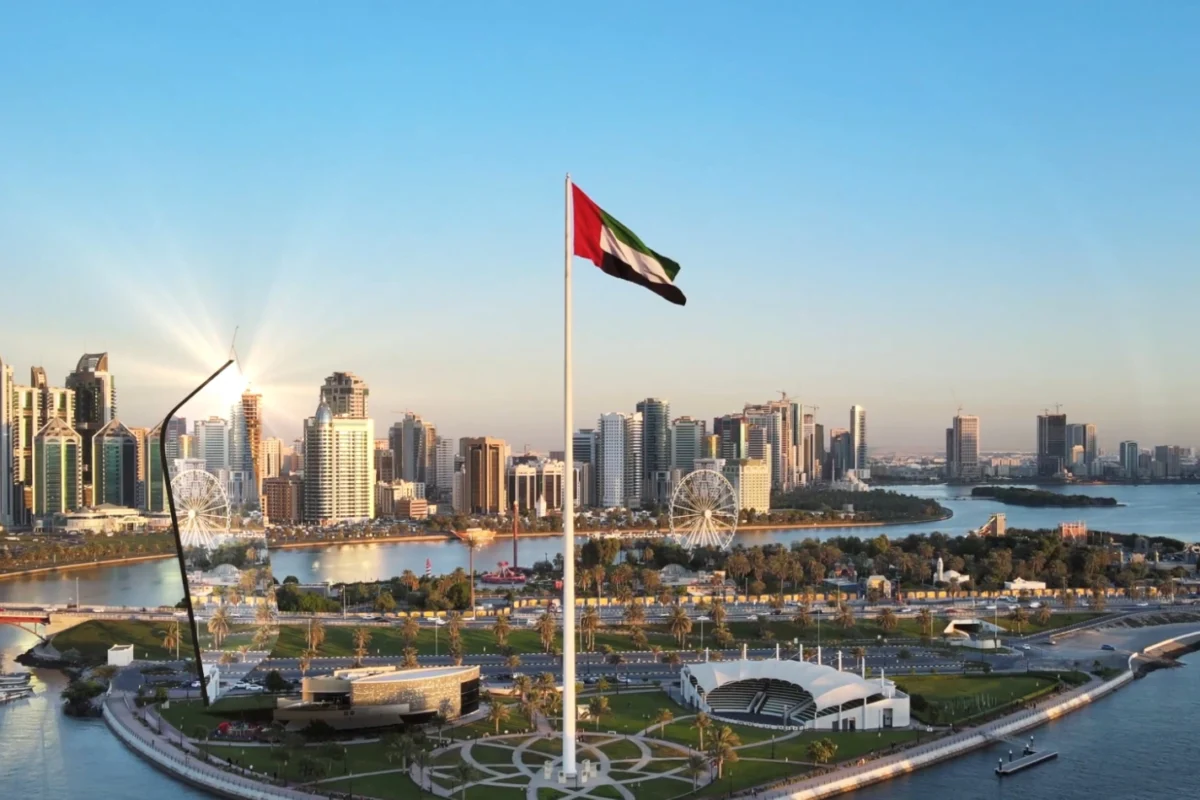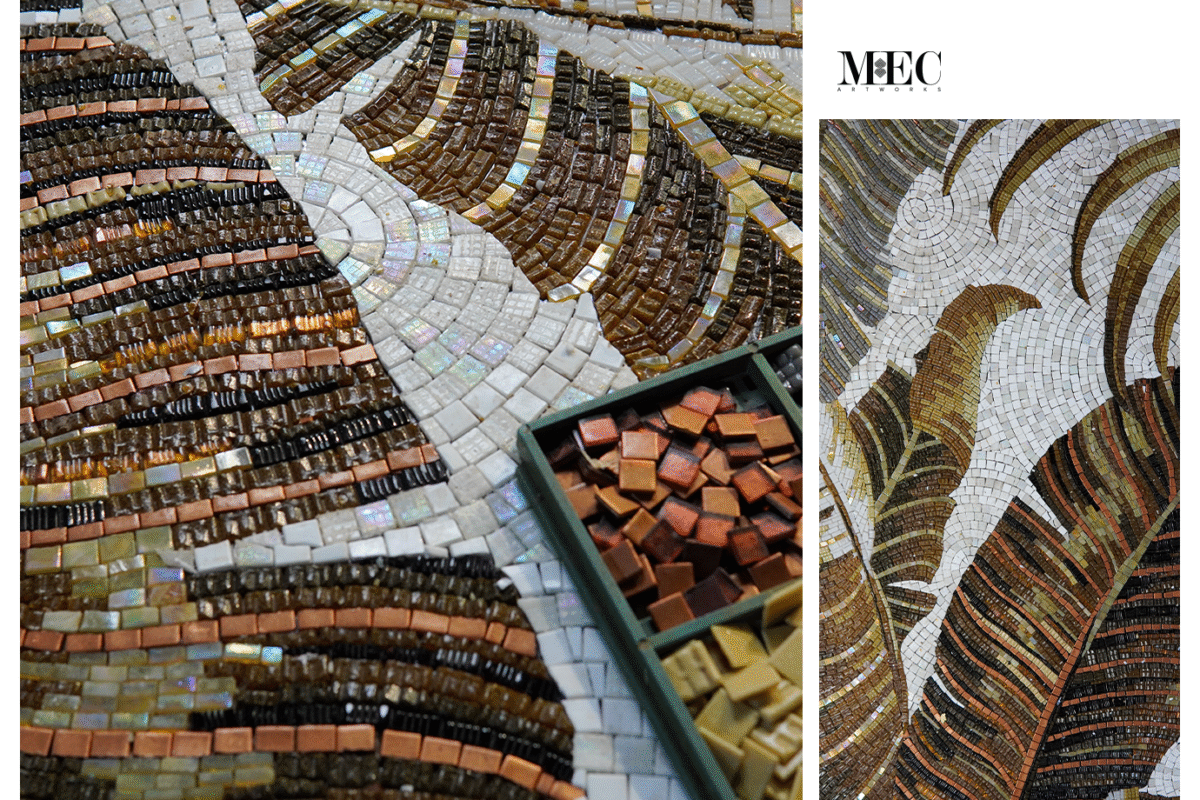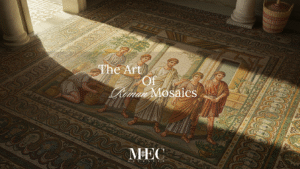
How to Choose the Right Mosaic Tile Patterns for Your Architecture Projects in the UAE

How to Choose the Right Mosaic Tile Patterns for Your Architecture Projects in the UAE
MEC ARTWORKS • Audio Episode
The UAE showcases unique architectural innovations that blend modern technology with history. For architecture and design firms, choosing mosaic tiles is both exciting and challenging. You aren’t just selecting tiles; you’re crafting lasting experiences with glass, or marble.
Mosaic tiles have historically influenced architectural styles. In the UAE, these tiles carry cultural significance and reflect the intricate designs of Islamic art. At MEC Artworks, we focus on custom mosaic artistry that fits the UAE’s unique aesthetic. In this guide, we’ll look at key factors to help you pick the perfect mosaic tile patterns for your architectural vision.
Table of Contents
Understanding the Architectural Narrative
UAE architecture tells a powerful story of growth and ambition. In just a short time, the country has built everything from traditional desert homes to world-famous skyscrapers. These buildings show how the UAE quickly embraced modern design while holding on to its cultural roots. Architects in the UAE mix Islamic art and old building methods with new ideas. This creative blend honors the past but also looks forward to the future. The large size and luxury of many buildings show the country’s strong economy. They also prove the UAE’s status as a global leader in trade, tourism, and culture. Many of these famous buildings stand as symbols of national pride and global ambition.
Mosaic as Narrative: Preserving the Architectural Identity of the United Arab Emirates
In the UAE, mosaics are becoming more than just decoration; they now tell stories. Each tile, color, and pattern shares something about the country’s past and future, like desert scenes, pearl diving, Islamic art, and modern mosaic dreams. As the UAE grows quickly, mosaics help keep its culture and memories alive through beautiful and meaningful designs.
Cultural Influences of Design
In the UAE, mosaic tiles do more than just decorate, they show cultural heritage. Inspired by Islamic art, these tiles use geometric patterns and colors that reflect the desert and ocean. Designers mix these traditional styles with modern ones to create a unique blend of old and new. The materials, patterns, and overall design choices clearly show this connection.
As the UAE grows quickly, it becomes even more important to include cultural memories in new buildings. Mosaics help do this. They build a strong link between the past and present by placing culture directly into walls and floors. Each mosaic tells a story about the UAE’s history and identity. Some show the shapes and symmetry of Islamic art.
Mosque Architecture
Mosques are spiritual places, so every part of their design should feel peaceful and sacred. When designing mosaics for mosques:
- Use Quranic calligraphy: Designers often include Islamic Mosaic Calligraphy in which they use Quran verses in Arabic script. These are not just words, they are a form of sacred art. The writing should be elegant and placed in areas like domes, prayer halls, and entrance walls.
- Add vegetal and floral patterns: These abstract designs, inspired by plants and flowers, symbolize growth, paradise, and life. They look beautiful on walls, arches, and ceilings.
- Focus on sacred geometry: Geometric patterns are common in Islamic design. They show unity and perfection. Designers use shapes like stars, hexagons, and interlocking lines to cover large surfaces without repeating the same design.
- Choose the right materials: Use high-quality tiles like marble, ceramic, or gold-infused glass mosaics. These materials give a rich, elegant look and last for a long time.
Heritage Buildings and Museums
Heritage buildings and museums protect and tell the story of the past. When designers restore or renovate them, they need to be careful and creative at the same time.
- Restore old tilework: Use photos, sketches, or original tiles to bring back the building’s true look. Match colors, patterns, and materials closely so the new work blends in with the old.
- Use traditional motifs: Bring in design elements like Moorish arches, star patterns, or blue floral tiles that reflect local history and Islamic influence.
- Blend old and new: You can mix traditional art with modern tools. For example, use digital printing to recreate old tile patterns with more speed and accuracy. This helps keep the original feel while using updated techniques.
Public Art Installations
Public art makes cities more vibrant and memorable. Large mosaic artworks in parks, walkways, and plazas can inspire pride and connect people to local culture.
- Design large-scale murals: Use thousands of small tiles to make one big image. These murals can show Bedouin life, falcons, desert scenes, or modern UAE skylines.
- Celebrate legends and heritage: Include famous poetry, important landmarks, or stories from Emirati folklore in the design. This brings history to life in a colorful and creative way.
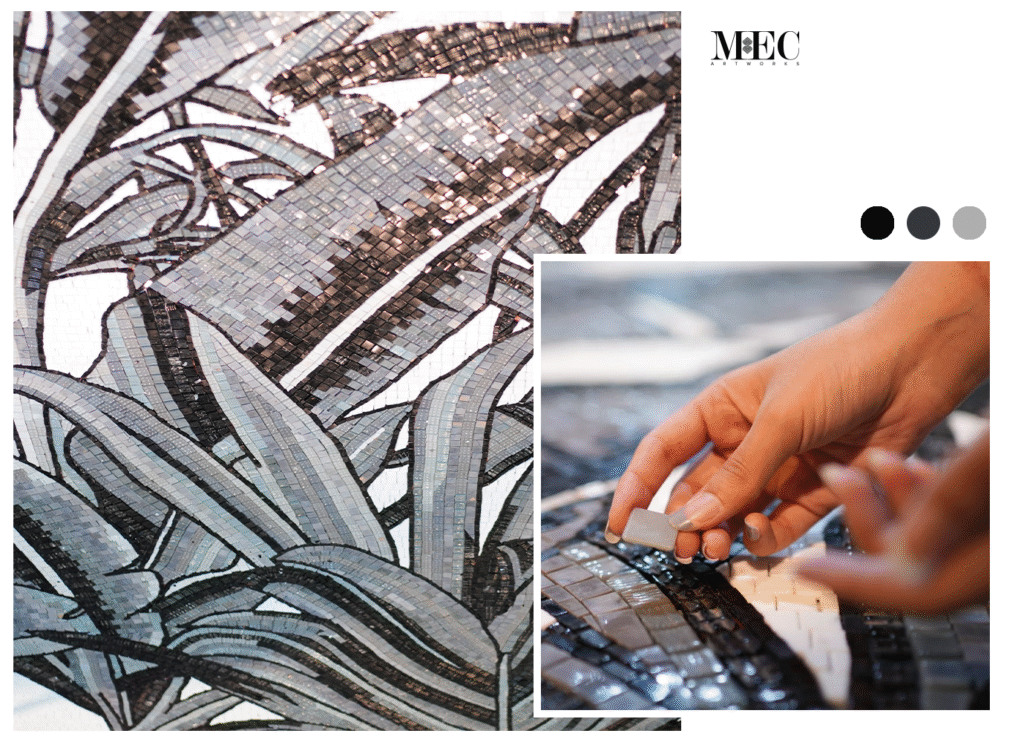
Choosing the Right Mosaic Tiles for the UAE Climate
The UAE’s hot and dry climate makes it important to choose the right mosaic tiles. Tiles must handle extreme heat, bright sunlight, humidity, and even sandstorms. If you pick the right materials and patterns, your design will stay beautiful and strong for many years.
Heat Resistance and Staying Cool
In the summer, outdoor surfaces can get hotter than 50°C. To handle this:
- Use heat-resistant materials like porcelain, travertine, or granite for outdoor areas.
- Avoid untreated glass tiles, as they might change color or expand if not properly installed.
- Pick light-colored tiles like white, beige, or soft blue. These reflect sunlight and help keep surfaces cool.
- Dark-colored tiles absorb more heat and may become too hot for walking, especially on terraces or pool decks.
Handling Humidity and Moisture
Cities like Dubai and Abu Dhabi get very humid. To protect your tiles:
- Use waterproof glue and grout to prevent mold and keep tiles in place.
- Choose matte or textured finishes, which are safer in wet areas and help avoid slipping.
Sunlight and Color Protection
Tiles exposed to strong sunlight need to resist fading:
- UV-stabilized tiles keep their colors bright over time, great for walls, pools, and fountains.
- Protective glazes help tiles last longer against sun and weather.
Fighting Dust and Sand
The desert brings dust and fine sand. To keep your tiles clean and neat:
- Use textured or patterned tiles to hide dirt.
- Pick narrow grout lines to reduce buildup and make cleaning easier.
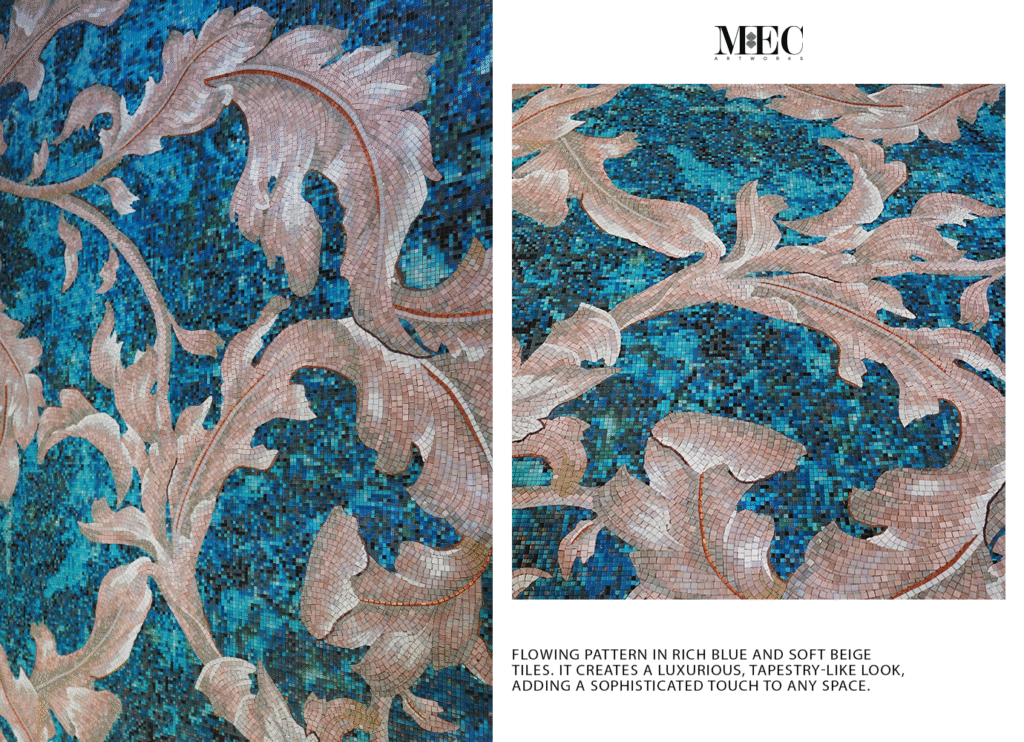
Fusion of Patterns with Mosaic Tiles
Geometric Patterns in Mosaic Design
Geometric patterns are timeless design elements in mosaic art, especially in the UAE’s architecture. What Are Geometric Patterns? Geometric patterns use shapes like: Hexagons Triangles Squares Stars Tessellations (interlocking shapes.These shapes form symmetrical, repetitive sequences. This creates designs that are visually appealing and culturally meaningful.
At MEC Artworks, these patterns do more than decorate. They connect tradition with modern innovation. MEC Artworks celebrates the heritage of Islamic geometry in mosaics.
Floral and Organic Motifs in Mosaic Design
Floral and organic motifs are key in mosaic art. They provide a softer, fluid look that balances the sharpness of geometric patterns. These designs are inspired by nature flowers, vines, leaves, and waves. They evoke elegance, tranquility, and natural beauty in architectural spaces. MEC Artworks specializes in custom mosaic projects that celebrate the beauty of natural forms.
Figurative and Pictorial Art in Mosaic Design
Figurative and pictorial mosaics add life, story, and identity to buildings. They show recognizable subjects like people, animals, landscapes, and cultural symbols. These mosaics differ from geometric or floral designs. They emphasize storytelling and personalization, often becoming focal points in a space.
Modern and Abstract Mosaic Art Design
Modern and abstract mosaic art designs break free from traditional forms and embrace bold creativity, asymmetry, and expressive color palettes. They are often chosen for cutting-edge architecture, art-driven spaces, and clients seeking a unique visual identity that transcends conventional design categories.
Residential Applications and Aesthetic Strategies
Mosaic tiles can turn your house into a stylish and welcoming home. Whether you’re designing a living room, kitchen or bathroom the right mosaic tile pattern adds elegance, personality, and cultural value to each space. This is how you can use mosaics in different areas of a home in the UAE.
Living Rooms and Lounges
You can make your living room stand out by adding a feature wall using floor mosaic tile patterns. These shapes give the room a modern and clean look. Try using soft, earthy tones like beige, sand, or grey. These colors match the UAE’s natural desert landscape and create a calm and cozy mood.
Designers often place mosaic tiles behind fireplaces, TV units, or sofas. This adds texture and interest without making the space feel too busy. If you want something bold, you can add metallic or glass mosaics for a touch of shine.
Bathrooms and Kitchens
Bathrooms and kitchens are great places to use mosaic tiles because they are easy to clean and can handle water and heat.
- In bathrooms, designers use mosaics in showers, behind bathtubs, or around mirrors. Glass or ceramic mosaics in cool colors like blue, green, or pearl white give a fresh and clean feeling. Moroccan tile patterns with bright colors are used for mood lighting to highlight these tiles and create a spa-like effect.
- In kitchens, mosaics work well as backsplashes the area between the countertop and the cabinets. They protect the wall from stains while adding style. Floral mosaic art makes kitchens feel warm and welcoming.
Staircases and Hallways
Don’t ignore the small spaces in your home. You can add logos & signage mosaic designs to stair risers (the vertical part of each step) to make your staircase more artistic. Choose simple repeated patterns or even tell a story with different tiles on each step.
In hallways, you can install mosaic borders or accent strips along the floor or walls. These details guide guests through the home and add a touch of elegance to plain areas.
Incorporating Islamic Patterns and Motifs in Mosaic Tile Design
In the UAE and across the Islamic world, art and architecture connect deeply with culture and faith. Mosaic tiles are a big part of this connection. When designers use Islamic patterns and symbols in mosaic work, they honor tradition while adding beauty and spiritual meaning to a space.
Using Islamic Elements in Mosaic Tilework
You can add Islamic designs to architecture in many creative and subtle ways:
- Feature Walls & Entrances: Use large geometric or arabesque patterns in entryways, lobbies, or villa entrances to make a bold and elegant first impression. These designs instantly reflect Islamic heritage and artistic excellence.
- Mosques and Prayer Rooms: These sacred spaces often include symmetrical patterns and Arabic calligraphy in tile designs. These elements create a peaceful and focused environment, perfect for prayer and reflection.
- Fountains and Courtyards: Traditional courtyards and garden areas look more inviting with colorful, detailed mosaic tiles. Many of these designs are inspired by Islamic garden layouts, which are meant to symbolize paradise.
Importance of Collaborating with Interior Designers and Tile Specialists
Choosing the right mosaic tiles isn’t just about picking a pretty pattern. It takes skill, planning, and expert advice. That’s why working with interior designers and tile specialists is so important, especially in the UAE’s unique climate and cultural setting.
- Get the Right Look for Your Space :Interior designers help you match tile styles with your project’s theme. Whether your space is modern, traditional, or a mix of both, they know how to choose colors, patterns, and layouts that fit perfectly
- Choose the Best Materials: Tile specialists know which materials work best for different places. They help you pick tiles that can handle heat, humidity, and wear, making sure your design looks great and lasts longer.
- Avoid Costly Mistakes: Professionals can spot problems early and guide you through installation. This saves you time, money, and stress by helping you avoid poor choices or rework.
- Blend Beauty with Function: Designers and tile experts balance looks with practicality. They make sure the tiles not only look beautiful but are also easy to clean, safe to walk on, and suited for your space’s lighting and use.
- Create Custom Designs: If you want a one-of-a-kind look, experts can help you customize mosaic patterns that tell your story or reflect your brand. This is especially useful for luxury spaces or cultural projects.
MEC Artworks: Tailoring Mosaic Dreams for UAE Architecture
MEC Artworks is the go-to expert for bespoke mosaic artworks for architectural companies in the UAE who wish to make an unparalleled mark.We offer:
- Collaborative Design Process: as we meet with architects and designers to capture their briefs and transform them into stunning custom mosaic tile patterns. We provide bespoke solutions that meet our client’s unique requirements.
- Endless Customization : from geometric patterns to pictorial mosaic tile art, we offer limitless creativity regarding design, colour palettes, materials, and sizes.
- Guidance in Choosing Materials: we will help you select the mosaic materials that will achieve the aesthetic appeal alongside the longevity and beauty in the environment of UAE.
- Every custom mosaic:is crafted with precision by skilled hands which guarantees the quality. Having supreme quality, the mosaics will transform the spaces of architecture into true art pieces.
- In the case of landmark commissioned works: high-end luxury apartments, or any other artwork where distinct artistic design captures attention, the architecture is elevated through the use of mosaic customization.
In UAE, mosaics or tile art, whether bespoke narrating a tale or handpicked from catalogues, is one the strongest instruments to deploy to enhance the beauty and character of a place as they strive to stand out in the region’s fierce and bold architectural race.
Creating a mosaic masterpiece is a journey filled with delights. Understanding the tiles, analyzing the structure, designing carefully, considering installation and budgeting all steps lead toward selecting perfect UAE patterned tiles that are vibrant and filled with the enigma of deep culture rich with history.
Bringing Spaces to Life with Mosaic Excellence
UAE architects often merge modern minimalist designs with traditional elements, such as Islamic geometric patterns and luxurious marble inlays. The correct mosaic adds both beauty and meaning, whether it is Islamic motifs or contemporary abstracts. Your project can demonstrate cultural richness and withstand the harsh conditions of the area with the help of MEC Artworks’ professional advice and unique ideas.
Ready to bring your architectural vision to life? Let MEC Artworks assist you in choosing the best option that will allow you to add a touch of elegance and texture to your space.
FAQS
What is a mosaic tile pattern?
A mosaic tile pattern is a design made by arranging small pieces of tile, usually in various colors and shapes, to create a larger picture or decorative surface.
What do mosaics symbolize?
Mosaics show how many different small parts can come together to make one beautiful and complete picture. They stand for togetherness and how unique pieces create something whole.
How do I work out how many mosaic tiles I need?
First, measure the size of the area you want to tile (like a wall or floor) to find its total space. Then, divide that by how much one tile sheet covers to find out how many sheets you’ll need.
How long do mosaic tiles last in extreme heat?
When installed and taken care of correctly, mosaic tiles can last a very long time, often over 20 years, even when exposed to high temperatures. Their ability to handle heat depends on the material and tiles being especially durable.
Share on
Latest Posts

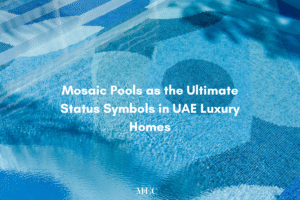
Mosaic Pools as the Ultimate Status Symbols in UAE Luxury Homes
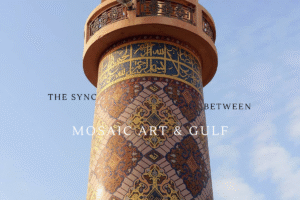
The Sync Between Mosaic Art & the Gulf
